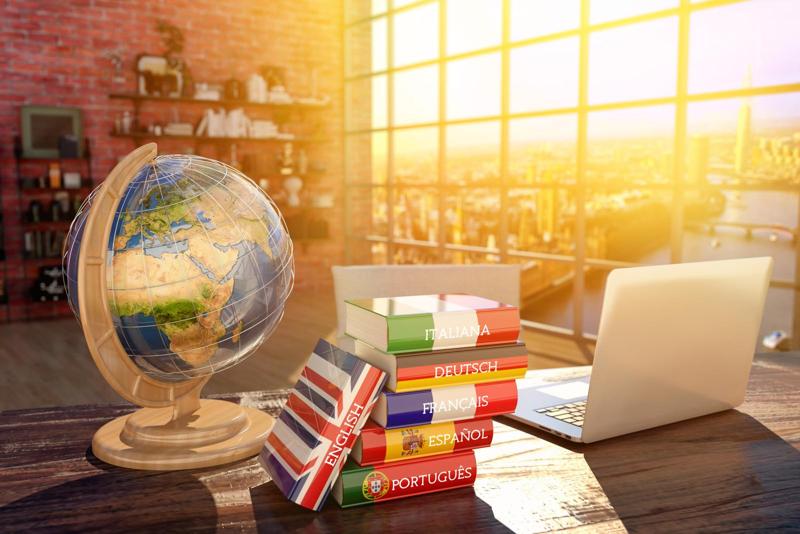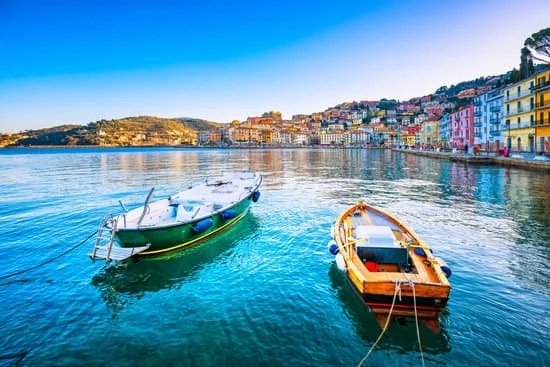When it comes to exploring the beautiful country of Italy, accurate translations can make all the difference for travelers. From navigating local transportation to ordering a meal at a restaurant, understanding essential phrases and expressions in Italian can enhance the overall experience. In this article, we will delve into the significance of accurate translations in Italian travel and tourism, providing insights into the importance of linguistic and cultural accuracy in the industry.
In today’s globalized world, the travel industry relies heavily on effective communication across languages. Mistranslations can lead to confusion, misunderstandings, and ultimately impact a traveler’s experience in a negative way. Whether it’s signage at popular tourist sites or information provided by tour guides, ensuring that travel content is accurately translated is crucial for creating a positive and seamless experience for visitors to Italy.
As businesses and individuals strive to connect with Italian audiences, understanding common phrases and expressions becomes essential. From greetings and polite language to navigation and dining etiquette, having access to accurate translations can help travelers navigate through different aspects of their journey. This article aims to shed light on the importance of linguistic precision in Italian travel and tourism translations while providing practical tips for businesses and travelers alike.
The Importance of Accurate Translations in Italian Travel and Tourism
Accurate translations play a crucial role in the travel and tourism industry, especially when it comes to Italian destinations. Mistranslations can have a significant impact on a traveler’s experience, leading to misunderstandings, confusion, and even frustration. Therefore, it is essential for businesses and individuals in the travel industry to prioritize linguistic and cultural accuracy in their translations.
When it comes to Italian travel and tourism, understanding the importance of accurate translations is indispensable. Here are some reasons why linguistic precision is crucial in this context:
- Misinterpreting directions or instructions can lead to travelers getting lost or missing out on important attractions.
- Incorrectly translated information about cultural practices or etiquette can lead to unintentional disrespect or misunderstandings with locals.
- Poor translations on marketing materials can give tourists a negative impression of a destination, impacting its reputation.
The need for linguistic accuracy extends beyond just translating words from one language to another; it also involves understanding cultural nuances and expressions that may not have direct equivalents in another language. This highlights the importance of working with professional translators who are not only fluent in both languages but also have a deep understanding of the culture and customs associated with Italian travel and tourism. By prioritizing accurate translations, businesses can enhance the overall experience for travelers visiting Italy.
Common Italian Travel and Tourism Phrases and Expressions
When traveling to Italy, it’s essential to have a few key phrases and expressions at your disposal to navigate daily interactions. Whether you’re dining at a local restaurant or asking for directions, knowing some basic Italian can enhance your travel experience. Here are some common Italian travel and tourism phrases and expressions that every traveler should know:
- “Buongiorno” – Good morning
- “Grazie” – Thank you
- “Dov’è il bagno?” – Where is the restroom?
- “Mi chiamo ” – My name is
- “Quanto costa?” – How much does it cost?
Learning the correct pronunciation of these phrases can also help ensure clear communication with locals. While English is widely spoken in tourist areas, making an effort to speak Italian shows respect for the local culture and can lead to more meaningful interactions during your trip.
In addition to these basic phrases, it can be helpful to learn some essential travel and tourism expressions in Italian. Here are a few examples:
- “Un biglietto per favore” – One ticket please
- “Dove posso trovare un taxi?” – Where can I find a taxi?
- “Il conto, per favore” – The bill, please
By familiarizing yourself with these phrases and expressions before your trip, you’ll be better prepared to communicate in various travel situations while in Italy. Gaining even a basic understanding of the language can make your travel experience more enjoyable and rewarding.
Translating Marketing Materials for Italian Tourism
Translating marketing materials for Italian tourism presents a unique set of challenges due to the importance of conveying cultural nuances and appealing to the specific interests and preferences of Italian travelers. When it comes to advertising and promotional content, understanding the cultural context is crucial in order to create messages that resonate with the target audience.
This includes knowledge of local customs, traditions, and consumer behavior. Additionally, linguistic accuracy is essential in marketing translations, as any errors or misinterpretations can undermine the credibility of a campaign.
One major challenge in marketing translations for Italian tourism is the need for transcreation rather than literal translation. Transcreation involves adapting the original message to evoke the same emotions and responses in another language or culture.
This often requires creativity and an in-depth understanding of both languages and cultures, as well as a deep knowledge of local idiomatic expressions and references. For example, a slogan that works well in English may not have the same impact when translated directly into Italian, so it’s important for translators to have the skills necessary to rework content effectively.
Understanding the target audience is also essential when translating marketing materials for Italian tourism. Different regions within Italy have their own dialects and cultural norms, so it’s important to tailor marketing content accordingly.
For example, a campaign targeted at tourists visiting Tuscany will differ from one aimed at those visiting Sicily or Venice. Therefore, it’s crucial for businesses to work with experienced translators who have an intimate knowledge of regional differences within Italy in order to effectively localize their marketing materials.
| Challenges | Considerations |
|---|---|
| Cultural nuances and appeals | Understanding local customs, traditions, consumer behavior |
| Transcreation | Adapting messages creatively while ensuring emotional resonance |
| Target audience understanding | Tailoring content based on regional differences within Italy |
Italian Travel and Tourism Translation Tips
Understanding Cultural Nuances
When translating content for the Italian travel and tourism industry, it is crucial to understand the cultural nuances that can impact language usage and interpretation. Italy has a rich and diverse cultural heritage, with each region having its own unique traditions, dialects, and customs.
When working on translations for this market, it’s essential to consider these regional differences and ensure that the content resonates with the intended audience. This may involve adapting phrases or messaging to align with specific cultural preferences, making the content more relatable and engaging for Italian travelers.
Localizing Content for Italian Audiences
In addition to understanding cultural nuances, effective translation in the Italian travel and tourism industry also requires localization of content. This means going beyond simply translating words and taking into account the context in which the translated content will be used.
For example, marketing materials targeted at Italian tourists should reflect an understanding of their preferences, interests, and behaviors. By localizing content to suit Italian audiences, businesses can create a more personalized experience for travelers and enhance their connection with the destination or service being promoted.
Collaborating with Native Speakers
One of the most valuable tips for achieving accurate translations in Italian travel and tourism is to collaborate with native speakers or professional translators who have a deep understanding of both the language and culture. Native speakers can provide insight into idiomatic expressions, local terminology, and common phrases that may not have direct equivalents in other languages.
Their expertise can help ensure that translated content effectively conveys the intended message while resonating authentically with Italian audiences. Whether working with freelance translators or translation agencies, partnering with individuals who have a native-level proficiency in Italian can significantly enhance the quality of travel and tourism translations.
The Role of Professional Translators in Italian Travel and Tourism
Professional translators play a critical role in the Italian travel and tourism industry, ensuring that communication is accurate and culturally sensitive. When it comes to translating content for the travel sector, there is no room for error as even minor inaccuracies can have a significant impact on a traveler’s experience. This section will explore the value of hiring professional translators for travel and tourism content, as well as the benefits of working with native Italian speakers.
Value of Hiring Professional Translators
One of the key reasons why professional translators are essential in the Italian travel and tourism industry is their linguistic expertise. Travel-related content often includes specific terminology, regional dialects, and cultural references that require a deep understanding of the Italian language. Professional translators possess the necessary language skills and cultural knowledge to accurately convey this information to travelers.
Additionally, professional translators bring a level of professionalism and reliability to the translation process. In the fast-paced world of travel, timeliness is crucial. Professional translators are able to meet deadlines while maintaining high standards of accuracy and quality in their work. This ensures that travel businesses can deliver their content to Italian audiences in a timely manner without sacrificing linguistic or cultural accuracy.
Benefits of Working with Native Italian Speakers
Another important aspect of hiring professional translators for Italian travel and tourism content is the advantage of working with native Italian speakers. Native speakers have an innate understanding of their language and culture, allowing them to pick up on nuances that non-native speakers may miss. This is particularly important when it comes to translating marketing materials or creating content aimed at engaging an Italian audience.
Furthermore, native Italian translators can provide valuable insights into local customs, preferences, and trends that may be relevant to travelers in Italy. Their perspective allows for more effective localization efforts, ensuring that translated content resonates with Italian audiences on a deeper level. By collaborating with native speakers, businesses can create translations that feel authentic and organic, ultimately enhancing their connection with travelers in Italy.
The Impact of Technology on Italian Travel and Tourism Translations
In today’s digital age, technology has significantly impacted the way travel and tourism translations are approached. With the rise of translation apps, online tools, and other language barrier solutions, travelers to Italy now have more resources than ever to overcome linguistic challenges. These advancements have not only made it easier for tourists to navigate their way through Italy but have also facilitated smoother communication between businesses and their Italian-speaking clientele.
One significant way technology has impacted Italian travel and tourism translations is through the development of real-time translation apps. These apps allow travelers to instantly translate signs, menus, and conversations in real-time using their smartphones. This means that tourists can easily understand and interact with their surroundings without the need for a physical translator or guide. This technology has not only made travel more accessible but has also enabled deeper cultural immersion for visitors to Italy.
Furthermore, online translation tools have also played a crucial role in bridging language gaps in the travel industry. Businesses catering to Italian tourists are now able to use these tools to translate their websites, marketing materials, and other content with greater ease and efficiency. This has allowed for more accurate and culturally sensitive translations, ultimately enhancing the overall experience for Italian travelers.
| Technology Advancements | Impact |
|---|---|
| Real-time translation apps | Enable instant translation of signs, menus, and conversations for tourists |
| Online translation tools | Facilitate accurate translations of websites and marketing materials for businesses targeting Italian travelers |
Overall, technology has revolutionized the way Italian travel and tourism translations are approached. It has empowered both tourists and businesses to engage in meaningful cross-cultural exchanges while ensuring accurate communication across linguistic barriers. As technology continues to advance, it is expected that these innovations will further enhance the travel experience for those visiting Italy.
Case Studies
In today’s globalized world, accurate translations are essential for businesses in the travel and tourism industry. This is especially true when it comes to marketing materials, as a mistranslation can have a significant impact on a traveler’s experience.
When it comes to providing travel and tourism content for an Italian audience, companies must go beyond mere linguistic accuracy and ensure that cultural nuances are also taken into account. Here are some case studies of companies that have effectively translated their travel and tourism content for an Italian audience.
One example of successful Italian travel and tourism translations is the case of a luxury hotel chain that expanded its business to Italy. Understanding the importance of cultural sensitivity in translations, the hotel invested in professional translators who were native Italian speakers. By doing so, they were able to adapt their marketing materials to suit the local preferences and customs, resulting in a higher engagement with potential customers.
Another company that successfully navigated the challenge of Italian travel and tourism translations is a popular tour operator. In order to provide an authentic experience for their Italian customers, they carefully translated their tour descriptions and itineraries while also considering regional dialects and preferences. This attention to detail not only attracted more Italian tourists but also earned them positive reviews and recommendations within the market.
These case studies highlight the importance of accurate translations in the travel and tourism industry, particularly when targeting an Italian audience. By investing in professional translators who understand both language and culture, businesses can effectively connect with their target market and provide a positive experience for travelers in Italy.
Conclusion
In conclusion, the importance of accurate translations in Italian travel and tourism cannot be overstated. Mistranslations can have a significant impact on a traveler’s experience, potentially leading to confusion, frustration, and even cultural misunderstandings. As such, it is crucial for businesses and individuals in the travel industry to prioritize linguistic and cultural accuracy in their translations. This not only enhances the overall experience for travelers but also contributes to successful marketing efforts and business operations.
For businesses marketing their services to Italian travelers, understanding the cultural nuances and local preferences is essential for effective translation. It is not simply about translating words but also about conveying the right message that resonates with the target audience.
This requires working with professional translators who are native Italian speakers and have a deep understanding of the language and culture. Additionally, leveraging translation technology wisely can assist both businesses and travelers in overcoming language barriers, ensuring smoother communication and interactions during travel.
Ultimately, as the global travel industry continues to grow and evolve, accurate translations will play an increasingly crucial role in facilitating cross-cultural exchanges and experiences. By prioritizing linguistic accuracy and cultural sensitivity in translations, businesses can effectively capture the attention of Italian travelers while providing them with a seamless and enjoyable experience. It is through these efforts that we can foster greater appreciation for different cultures and create meaningful connections that transcend linguistic boundaries.
Frequently Asked Questions
What is translation in tourism?
Translation in tourism refers to the process of converting written or spoken information from one language to another for the benefit of tourists. This can include translating guidebooks, signage, menus, and other materials to help travelers navigate in a foreign country.
How do you say how much in Italy?
In Italy, “how much” can be translated to “quanto costa” when asking about the price of something. This phrase is commonly used when shopping or dining out and is a helpful expression for tourists to know when visiting Italy.
Have a great trip in Italia?
The phrase “Have a great trip in Italia” is a friendly way of wishing someone well on their travels to Italy. It’s a simple and sincere sentiment that conveys best wishes for an enjoyable and safe journey in the beautiful country of Italy.

I’m a passionate traveler, writer, and Italophile. My fascination with Italy’s history, art, and culture has led me on countless adventures across the Italian landscape. Through “I Live Italy,” I share my love for this extraordinary country and aims to inspire others to explore its boundless beauty.





